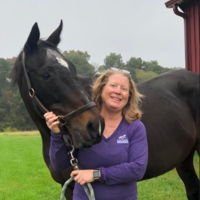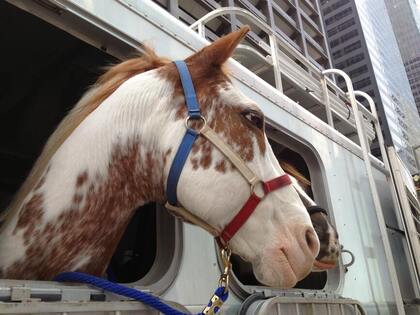
The Most Popular Horse Breeds Of 2019
Equestrian Advice & Guides General Equestrian
Build your business profile for FREE and expose your services to thousands of potential clients!
Create my profile now!
Dapples have long been thought to be a sign of a healthy coat, a harbinger of balmy summer rides when horse and rider often look their shiny best in the show ring or out on trails.
“Glory to God for dappled things” wrote the poet Gerard Manley Hopkins in “Pied Beauty” in 1877, a poem that praises all things that are unusual or different in the natural world from the wings of the tiny finch to the “brindled cow.” I have never heard an animal referred to as “brindled,” in my day, but it is used to describe an animal of a light brown hue with streaks of another, or other, colors.
Although dapples are genetic and most prevalent in gray horses (the famous dapple gray), any horse may have them, especially in spring and summer when they are most visible, or when clipped at other times of year. It comes down to red and black pigment in the hair that reveals the coveted pied appearance. Some say that grooming, lots of forage, and sources of Omega-3 fatty acids like flax will promote dapples, but the fact is, the genetics must be present in the first place.
As a rider more interested in poetry than science, I prefer to wonder at the sheer beauty of a dappled coat and to reflect on what might come from that. Where might my mind wander when admiring my dappled horse?
Ranger’s dapples are quite prominent now as his hair is at its shortest and the long days of June sun reveal their uneven, ludic circles that seem to dance as he moves in different lights at different times of day in celebration of natural beauty. After being hosed down, water darkens the dapples, but when scraped away, hair settles into a shiny vision. A fly causes his sensitive skin to flinch, making the dapples resume their lithe movement. When I watch him from a distance in his pasture near day’s end when the sun begins to disappear in a vermillion glow, his dapples become more subtle, mysterious like the night to come.
At any time of day, dapples delight me for their genetics, beauty, and mostly, their uniqueness as the poet said. ‘Tis a joy to take my dappled steed on a ride down a brindled trail where light flickers constantly as the sun, shadows, and flora repaint the road ahead. Another poet of nature, Charles Baudelaire, wrote that “Nature is a temple” in his poem “Correspondences” (1857) that discusses the relationship between all things natural in the woods: the smells, sounds and sights and the mysterious ways these combine to create a spiritual experience for the wanderer in the midst of such grandeur. Though he never intended to write about horses in this poem, I cannot help but ponder the correspondence between horse and rider achieved through training, trust, and skill. Yet, there remains a mystery to that bond we all so long to
achieve, as we think about a human and equine relationship for the duplicity, the joy, the sense of achievement, and the knowledge that such a bond exists and flourishes.
One never knows everything one will encounter on the trail. While many sights, sounds, and smells may be familiar, if not familiar to the horse and rider, others are not. On the trail through the woods, sunlight and shadows will dapple the path differently depending on the hour, the overgrowth, fallen or new trees and branches. It changes as do a horse’s dapples. Though genetics, grooming and light extend their rules, there remains a glorious mystery that makes our experience in the natural world with horses most perfect: through it’s very imperfection and unique qualities. Dapples make all the difference.

